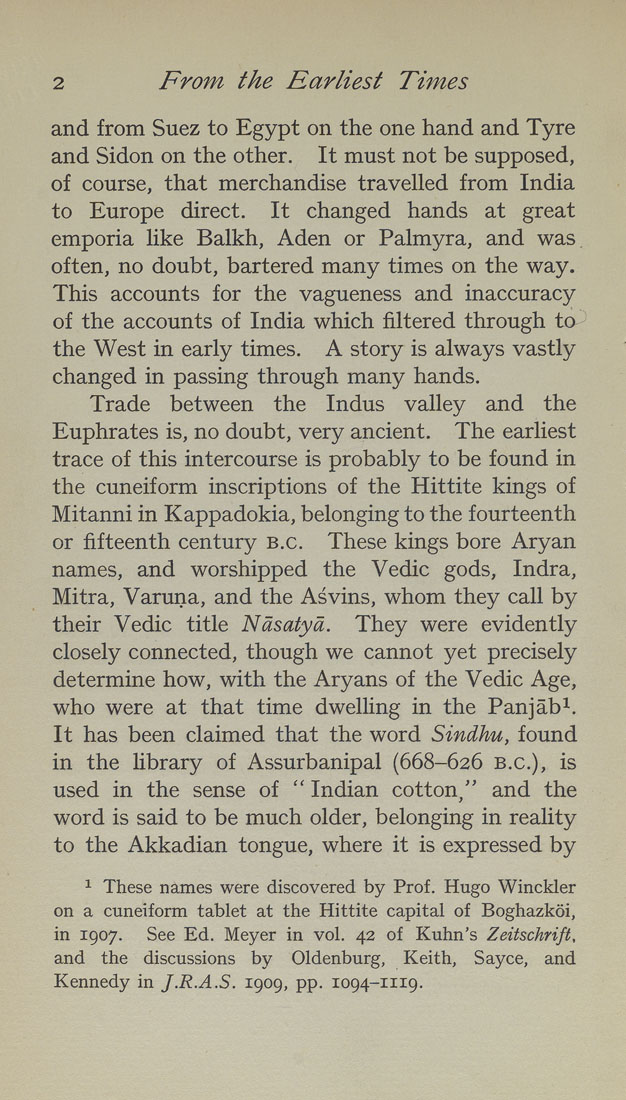2 From the Earliest Times
and from Suez to Egypt on the one hand and Tyre
and Sidon on the other. It must not be supposed,
of course, that merchandise travelled from India
to Europe direct. It changed hands at great
emporia like Balkh, Aden or Palmyra, and was,
often, no doubt, bartered many times on the way.
This accounts for the vagueness and inaccuracy
of the accounts of India which filtered through to
the West in early times. A story is always vastly
changed in passing through many hands.
Trade between the Indus valley and the
Euphrates is, no doubt, very ancient. The earliest
trace of this intercourse is probably to be found in
the cuneiform inscriptions of the Hittite kings of
Mitanni in Kappadokia, belonging to the fourteenth
or fifteenth century B.C. These kings bore Aryan
names, and worshipped the Vedic gods, Indra,
Mitra, Varuna, and the Asvins, whom they call by
their Vedic title Ndsatyd. They were evidently
closely connected, though we cannot yet precisely
determine how, with the Aryans of the Vedic Age,
who were at that time dwelling in the Panjab^.
It has been claimed that the word Sindhu, found
in the library of Assurbanipal (668-626 B.C.), is
used in the sense of " Indian cotton/' and the
word is said to be much older, belonging in reality
to the Akkadian tongue, where it is expressed by
^ These names were discovered by Prof. Hugo Winckler
on a cuneiform tablet at the Hittite capital of Boghazkoi,
in 1907. See Ed. Meyer in vol. 42 of Kuhn's Zeitschrift,
and the discussions by Oldenburg, Keith, Sayce, and
Kennedy in f.R.A.S. 1909, pp. 1094-1119.
|








